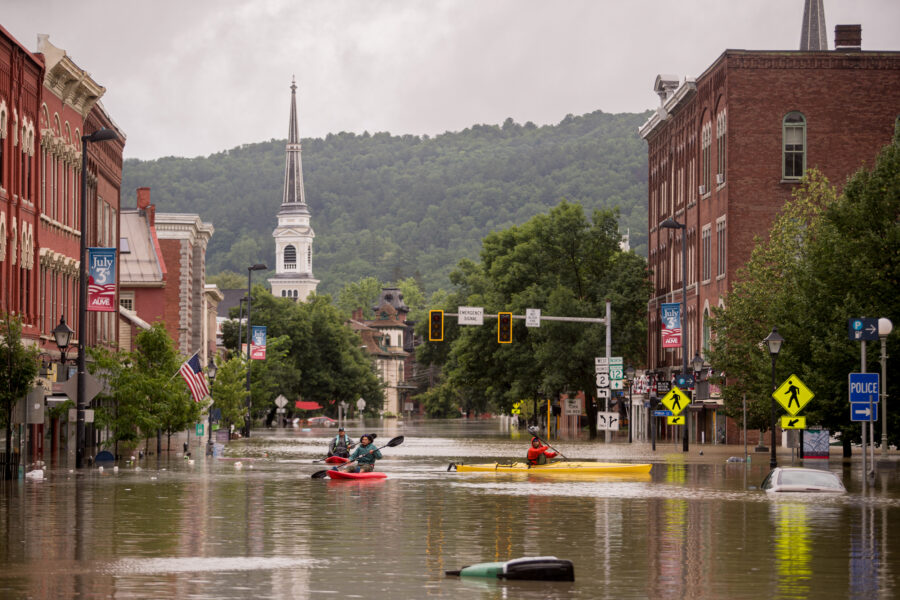Little evidence remains of the chaotic scramble to stop the massive oil spill that fouled Michigan’s Kalamazoo River in the summer of 2010, yet the full effects of the calamitous accident will likely remain unknown for years.
State environmental officials says it could be 2018 before they are ready to issue a final verdict on the damage done to the Kalamazoo after more than a million gallons of heavy crude oil poured into the river from a pipeline owned by Enbridge Inc.
At the same time, the U.S. Environmental Protection Agency is showing increasing irritation with Enbridge over its delay in meeting deadlines in the ongoing cleanup.
Federal officials want Enbridge to finish a massive dredging project and institute safeguards to prevent any oil remaining on the river bottom from washing downstream during spring flooding.
Both the short-term objectives set by the EPA and the review of massive amounts of data collected by the Michigan Department of Environmental Quality (MDEQ) are the primary factors that will gauge the Kalamazoo’s health.
“There are a lot of things that have to be taken into account when trying to answer the question about the river’s future,” said Michelle DeLong, the Enbridge response unit chief for MDEQ’s Water Resources Division.
Enbridge spokesman Larry Springer said the company will continue trying to minimize the effects of the spill, which contaminated nearly 40 miles of the Kalamazoo.
“We are, as we have always been, focused on cooperation with the U.S. EPA and other authorities in doing what is best for the river and the environment based on analysis and sound science,” Springer said in a written response to questions.
“Enbridge remains committed to completing the remediation of the Kalamazoo River. We will have a long-term presence in the area and will continue to work in the best interests of the affected communities and river environment.”
It was near Marshall, Mich. in July 2010 that Enbridge’s aging 6B pipeline burst and spilled heavy Canadian crude oil, known as dilbit, into the river. It was the largest inland oil pipeline spill in U.S. history. So far the cleanup has cost Enbridge an estimated $1 billion.
An InsideClimate News investigation of the accident—”The Dilbit Disaster: Inside the Biggest Spill You’ve Never Heard Of”—won the 2013 Pulitzer Prize for National Reporting.
MORE: InsideClimate News Team Wins Pulitzer Prize for National Reporting
The Kalamazoo’s cleanup has been especially difficult because the dilbit contained a mixture of oil-thinning chemicals and heavy bitumen, which gradually sank after the chemicals evaporated.
The EPA estimated earlier this year that about 180,000 gallons of oil remain in the river and ordered Enbridge to do more dredging in three areas. About half of that job is finished, with work continuing at the largest dredging site near Morrow Lake.
Although Enbridge had been on notice since March that federal officials wanted the dredging completed by the end of 2013, the company acknowledges it will fail to meet that deadline. In November, Enbridge requested a 10-month extension, saying it had experienced unforeseen delays in finding a suitable base site for the dredging near Morrow Lake.
The EPA bristled at the excuse, saying that “had Enbridge taken appropriate steps earlier, as requested, it would not require an extension now,” according to Jeffrey Kimble, the EPA’s on-scene coordinator.
The agency ordered Enbridge to “prepare a comprehensive plan detailing methods and timing” of the remaining work “even if that work extends into a timeframe of delinquency.”
The EPA also told Enbridge that it must have containment devices in place before the spring flood season to stop oil from moving into uncontaminated sections of the river.
Enbridge has argued that there is no evidence this has happened or will happen, again prompting a scolding from the EPA.
Kimble said the EPA “completely disagrees with Enbridge’s assertion.”
Springer said the company removed the vast majority of the spilled oil in 2010 and 2011. He cited a 2012 EPA statement that lauded the company for improved conditions on the river because its cleanup efforts appeared to have been “very successful.”
He also cited a 2011 Michigan Department of Community Health study that found no long-lasting health effects or cancer risk to humans, as well as the 2012 lifting of a ban on eating fish from the river as evidence of Enbridge’s effective remediation work.
MORE: The Dilbit Disaster 3 Years Later: An Audio Slide Show
The EPA declined to discuss the cleanup conflict with Enbridge or the future of the Kalamazoo River. Instead it provided a widely distributed statement by Region 5 Administrator, Susan Hedman.
“While significant progress has been made to reclaim the river, Enbridge’s work is not done,” Hedman said. “EPA will hold Enbridge accountable for completing this work and for covering the costs of this spill.”
In an interview earlier this year, Ralph Dollhopf, who was then the EPA’s on-scene coordinator, said that at some point the federal agency will turn over full responsibility for supervising the cleanup to Michigan officials.
“We have to determine at what point it will fall into a long-term job of administering the remediation,” Dollhopf said. “So for two years we’ve been asking: Now? No. Now? No.
“It will eventually happen.”
Michigan environmental officials say they are prepared to assume the lead role as river monitors.
DeLong, the Michigan environmental official, said testing and restoration will continue in the coming years, as tens of thousands of water and soil samples are analyzed.
“The sheer volume of data to review is extensive; that will go on for at least two years,” DeLong said.
Before the river can be pronounced healthy, she said many issues must be considered, including how well river vegetation and aquatic life have rebounded, whether people feel comfortable using the river for recreation and whether as much oil as possible has been removed.
“In the end this is about making sure the river is fully recovered in every aspect, not about meeting some artificial timeline,” she said.













